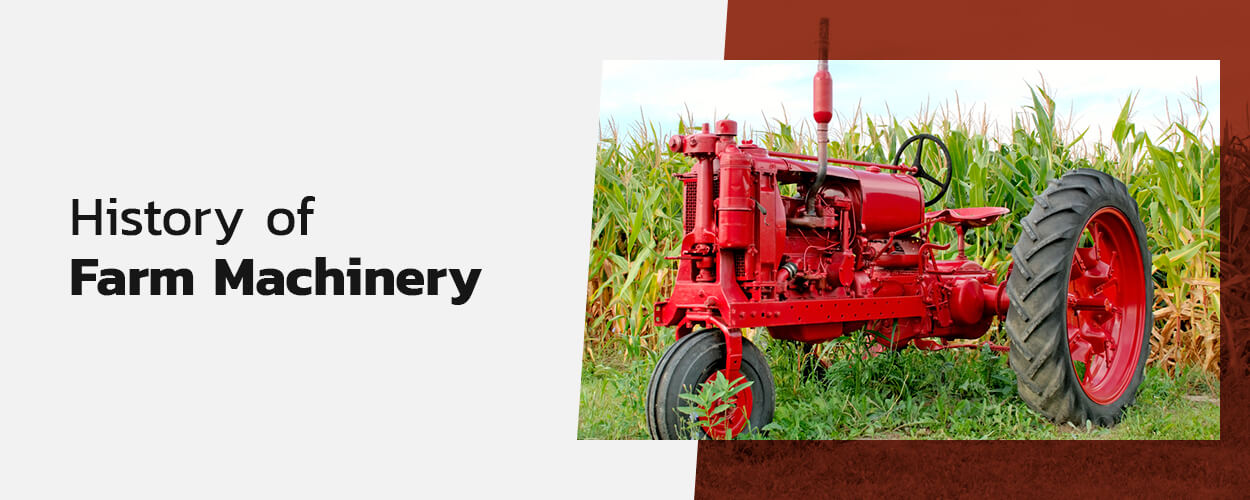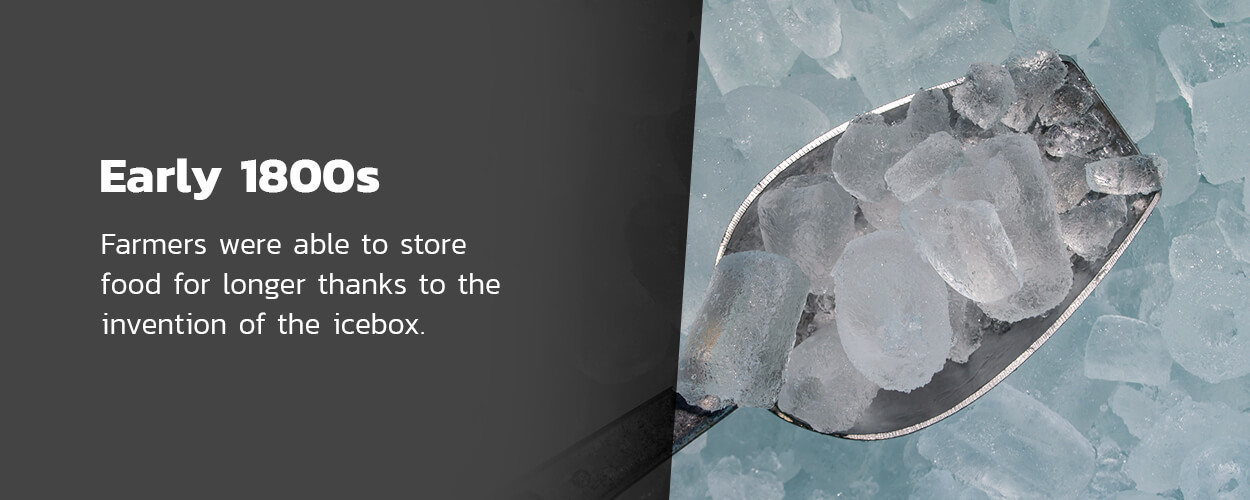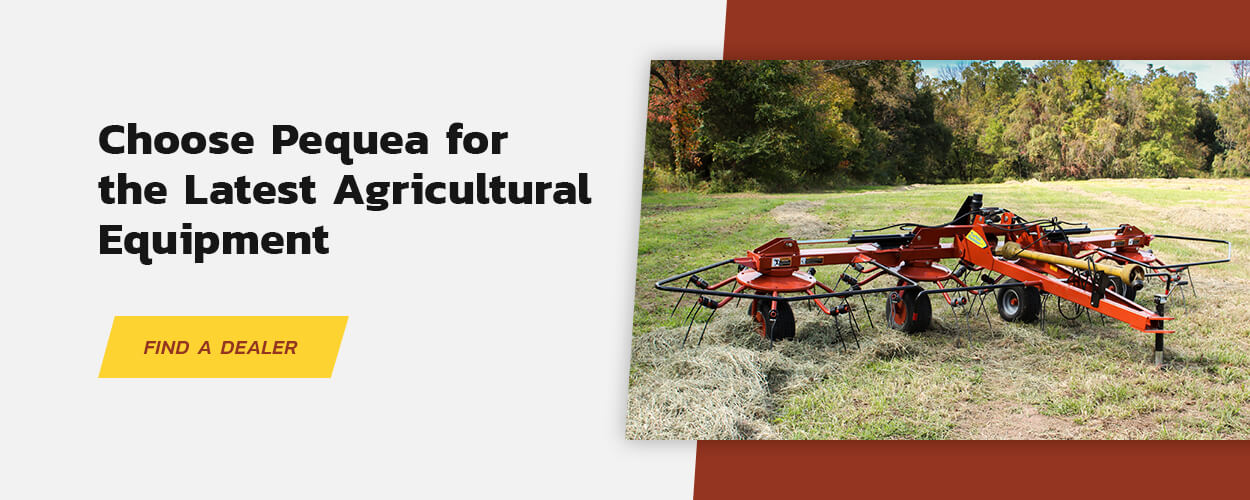History of Farm Machinery
The world of farm machinery has come a long way since using mules and other animals to tackle everyday tasks. Over the past several centuries, farming technology changes have become widespread, transforming the lives of farmers worldwide. Between modern plowing equipment and refined farming methods, agriculture has become more streamlined and organized — and the result is production on a whole new level.
Keep reading to learn about farm equipment evolution, from the early days of horse-drawn machines to the modern era of high-tech tools.
16th to 18th Century
Some of the earliest agricultural machines were invented in the 16th, 17th and 18th centuries. Back then, machinery relied on the strength of humans and animals to function. Those who could afford horses or oxen used them to pull plows, but many farmers had to complete tasks by hand. They sowed using scythes and shaped soil using hoes. Though farming is still hard work today, modern equipment has made it much less taxing.
By the end of the 18th century, farmers began testing new methods and inventions, like the cotton gin. Other inventions included the seed drill for faster seed sowing and the horse hoe for plowing. At the same time, crop rotation became an emerging method for improving crop yields and keeping the soil nutrient-rich. These advancements have each become a stepping stone in farm technology history.
Early 1800s
By the early 1800s, the tides of change were turning. Now, farmers were able to store food for longer thanks to the invention of the icebox. In addition, famed inventor Jethro Wood created his cast-iron moldboard plow with interchangeable parts. A few components made it special:
- It had improved balance.
- It was easier to use.
- It was strong.
- It was affordable.
Another major change occurred in 1810 when English citizen Peter Duran invented a way to seal food inside of tin cans. This method of food preservation gave food a much lengthier shelf life. Though people didn't yet have access to can openers — instead having to chisel the cans' steel lids to get them open — canned food quickly became the most convenient food storage option.
The agriculture equipment evolution continued throughout the remainder of the century.
Mid to Late 1800s
Some of the most significant shifts occurred during the mid to late 1800s. A few notable changes in equipment and processes included:
- The McCormick reaper: The new reaper made it possible to harvest large areas of grain much faster than before.
- The John Lane plow: John Lane created a plow featuring a steel blade, which made it easier to get through tough or sticky soil compared to its wooden predecessor.
- The grain elevator: This is also when farmers began using grain elevators to store their grain. Vertical storage made grain moving and processing easier, as grain can flow downward with ease thanks to gravity.
- The lawn mower: The first lawn mower was invented in 1830 in England, and other companies were quick to make their own improvements.
- The grain drill: Many versions of the grain drill have existed for centuries — Mesopotamian farmers were the first to use them. The equipment invented in the 1800s planted seeds at controlled depths through tubes attached to boxes. It operated with a measured amount of compaction to improve how many seeds would germinate.
- Mixed chemical fertilizers: Although people have used some version of fertilizer for thousands of years, chemical products weren't sold commercially until the mid 19th century. Spreading commercial fertilizer improved crop yields and offered more convenience.
- Two-horse straddle-row cultivator: Another invention was a horse-drawn row cultivator, which streamlined the cultivation process.
- Barbed wire: The patent for barbed wire changed the way farmers managed domesticated animals.
With the above inventions, John Deere and other manufacturers began turning out equipment, making machines available to wider populations of farmers. However, factory-made machinery meant farmers needed more money in order to keep up with competitors. As a result, commercial farming grew more and more common, and production began to increase.
1900s
By 1900, farming had become an entirely different game as mechanization and commercial farming had become the norm. One of the biggest changes in farm machinery history was the ability to power machines using gasoline. The reliance on animal power was no longer necessary — farmers were able to produce much more than they were before at much faster rates. In addition, fertilizer grew less expensive, and the government helped fund large-scale irrigation projects.
2000s
The trend of continuing to improve farming equipment remains steady today. Increasingly, tasks are becoming automated, allowing farmers to delegate tasks to save time and boost profits. In addition, software and mobile devices allow farmers to stay connected, access data and place orders within moments. The availability of data helps farmers make better decisions for their specific crops.
Looking Into the Future
If there's one lesson the history of farm equipment has taught us, it's that no one can say what changes will happen next. Various equipment updates will continue to be made as companies look further into options like automation, virtual reality and more. Just think about how revolutionary it was to store grain using a grain elevator! With today's access to technology, farming will continue to transform in profound ways over the next few decades.
Among the leaders of agricultural equipment technology is Pequea. Here at Pequea, we gather input from farmers and engineers to make the best possible machinery, refining our products every year to ensure we're getting ahead of the latest developments and trends. As a result, our customers have access to renowned modern farming equipment that improves accessibility and efficiency.
Contact a Pequea Dealer Near You
It's no secret that agriculture is completely different than it was a few centuries ago, thanks to numerous farm technology changes.
The history of agriculture equipment includes inventions and processes that revolutionized the way farmers produce food. From the 16th to 18th century, farmers had to use manual power, but changes in material, like the switch from wooden to steel plows, made farming a bit less labor-intensive. Furthermore, commercial farming became standard in order for farmers to afford manufactured tools. In the 1900s, gas-powered equipment allowed production to boom like never before.
Through the 21st century, updates continued to transform agriculture. Numerous technological advancements improved how well equipment could perform tasks. In addition, software, electronic devices and the availability of data changed the world of agriculture. Today, technology and equipment continue to improve.
If you're interested in learning about the latest machinery available, contact a Pequea dealer near you to learn more about the agricultural equipment we have to offer. At Pequea, we build farm equipment products that are stronger, longer-lasting and more efficient. Let us help you find the perfect gear for your farming operation.


